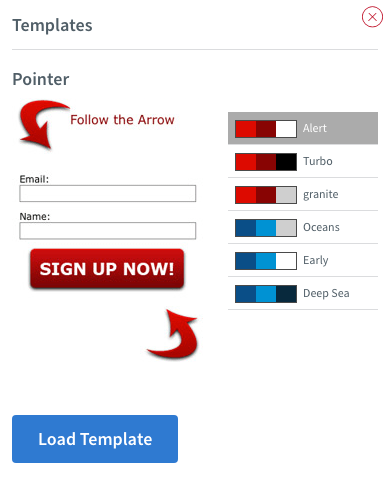Savvy, successful entrepreneurs owners know that to build a sustainable, long-term business, you need to own your assets.
That means not relying on a single source of traffic.
Or investing years into a non-portable website.
Or growing your audience on someone else’s platform.
Just like an offline business, you must build your own infrastructure so you can be in control of your income. Without it, you’re one algorithm change away from disaster.
The first business asset you need is your website. No, you can’t get by with a Facebook fan page and an Instagram account. You don’t need a $4,000 professionally branded site with custom page types and pro headshots, but you do need a website on a domain you own.
Coming in a very, very close second, though, is your email list. Regardless of what anyone tells you, email is critical to your long-term success, and here’s why:
[clickToTweet tweet=”An email list is the single best way to consistently reach an audience of fans and buyers who want to hear from you.” quote=”An email list is the single best way to consistently reach an audience of fans and buyers who want to hear from you.” theme=”style2″]
Facebook posts have limited reach. Twitter has the attention span of a toddler who’s badly in need of a nap. And while Pinterest is amazing at driving traffic, it’s not so great at time-sensitive content.
Plus, you still have the bigger issue, in that none of these platforms are under your control. Any one of them can change their business model on a whim—and they do, with sometimes disastrous consequences.
If you don’t want to be a victim to the fickle nature of social media and search results, then building an email list should be your number one priority. You absolutely cannot afford to ignore this.
Your email marketing plan begins with two basic components:
- A tool to collect and store addresses and send email
- A reason for people to join your list
Broken down like that, it sounds pretty simple, right? Well, it is, but so many service providers get hung up on the details that they stay stuck, and never bother to build a list at all.
Maybe they even convince themselves that list-building is simply not important in their business. Sound familiar? Let’s get past that today with a step-by-step plan.
Step 1: Choose an Email Marketing Provider
Your email marketing provider is the service you use to manage your contacts, send emails, and deliver opt-in freebies (or even paid downloads). They fall into two basic categories: Self-hosted and fully managed.
Self-hosted tools are installed on your server (where your website lives) and include Sendy, Dada Mail, and MailTrain.
While some marketers love the self-hosted options, they can be far more difficult to set up and maintain. Not only that, but staying compliant with the CAN-SPAM Act can be tricky. Deliverability is also a huge issue, and it’s entirely up to you to keep your server IP off the “known spammer” lists that can severely cramp your email style. That’s why savvy marketers who go the self-hosted route back it up with a solid SMTP host such as SendGrid.
If that last paragraph is already over your head, then a better choice for you is a fully managed email provider, and there are dozens to choose from.
AWeber is a popular option for those new to list-building. They’ve been in business for years, offer fantastic, newbie-friendly support, and integrate with just about everything imaginable.
If you want to automatically add buyers to your mailing list, AWeber very likely has an integration with your shopping cart. If you want to build a landing page, AWeber will almost certainly connect with your page builder. The same is true for pop-up forms, webinar providers, calendar apps, and even PayPal.
But with all these benefits, AWeber does have a few drawbacks to consider.
First, they are fully list-based. That means if you want to offer two different opt-in incentives you will need two lists inside your account. That’s no problem, as you can have unlimited lists in a single AWeber account. However, if your reader opts in for both offers, that contact is now on two lists, and as far as AWeber’s billing system is concerned, you now have two contacts, not one.
A more flexible approach is to use tagging within the system to segment contacts. As of right now, AWeber does not do this very well. They’re making changes in that direction, but as of the time of this writing, AWeber’s use of tagging is rather limited. Services built from the ground up with tagging at their core handle it much better.
Active Campaign is my mailing list provider of choice. If you’re on my list, you are in my Active Campaign account. While this system is a bit younger than AWeber, I find it much more flexible.
Rather than being list-based, Active Campaign uses tags to sort and categorize contacts. That means your readers can opt-in for any number of offers without being added to multiple lists. Active Campaign instead ads a tag to their record, and delivers the appropriate emails based on the presence of that tag. Unlike in AWeber, you only pay for one subscriber, regardless of how many offers that subscriber has accepted.
Here’s another big difference between AWeber and Active Campaign: With AWeber, you are charged for every contact, regardless of their status. If someone unsubscribes from your list, they are still counted as a contact. So if you’re edging toward that next service level, you’ll want to pay close attention to your unsubscribe counts and delete people if necessary. Active Campaign, on the other hand, only counts active subscribers when calculating your package price.
Other popular options include Mail Chimp, Convert Kit, Get Response, and Drip. I’m honestly not a fan of any of them, for a variety of reasons. Like most things though, the tool you choose will very much depend on your personal preferences. So with so many options, how can you know which is right for you?
First, I highly recommend signing up for a trial where available. Spend some time just navigating around the interface and exploring the email templates and other options. Contact their support to get a feel for how they operate. Read through the help documents and watch the videos. That’s the only way you’ll know for sure if you’ll be comfortable with the service.
Did you notice I didn’t mention Infusionsoft or Ontraport in this list?
That’s because while these providers do offer email marketing as a part of their service, it’s not their only use. More accurately called “CRMs,” or “Customer Relationship Manager,” these services also include shopping carts, membership scripts, snail mail, and a dozen other bells and whistles that fall far outside of email marketing.
As you might imagine, the learning curve is steep with both, and lets not forget the cost. While AWeber, Active Campaign, and others all start at around $20 per month, Infusionsoft and Ontraport will take a much bigger bite out of your wallet. Basic packages run $80 per month for a small number of contacts, and Infusionsoft tacks on a hefty onboarding fee as well.
Step 2: Give Readers a Reason (and a Place) to Subscribe
Whew! Now that you’ve compared all the options and made your choice, you’re finally ready to start building your list, right? Well, not so fast.
It’s a rare person who will reach out and say, “Hey, can you add me to your email list?”
Instead, you’ll need to make them an offer they can’t refuse.
Typical opt-in incentives include downloadable PDFs, video training, survey results, white papers, checklists and other useful and quickly consumable information. Don’t try to cram too much into your offer, though. That 89-page eBook and 4-module training course might be packed with useful information, but if it takes more than a few minutes to digest, most subscribers will not bother.
Instead, give them the “Cliff’s Notes” version that they can read through over a cup of coffee, and save the more in-depth info for a paid course.
Once you have your opt-in incentive chosen and created, you’ll need a way to collect those email addresses. At its most basic, you need an opt-in form, such as you see above. Like email service providers, there’s no shortage of options, and they all have their pros and cons.
The least expensive is to simply put an opt-in form in the sidebar or footer of your website. Depending on your mailing list provider, you may even be able to build a simple form in your dashboard and then just paste the code in your website. Easy-peasy.
Also, kind of ugly.

For a more eye-catching look, you’ll want to employ a form builder, such as PopUp Ally, Thrive Leads, or Bloom. (The forms you find on this site are built with Thrive.) This allows you to better control the branding, make a compelling offer, add a graphic, and customize the call to action.
From there, you simply add your opt-in forms in strategic places on your website, such as:
- Above the fold on your home page
- In the sidebar on your blog
- At the end of your blog posts
Even better, offer your readers a landing page with more information about your offer and why they should opt-in. These single purpose pages are similar to sales pages, but what you’re “selling” is your opt-in offer, and the asking price is an email address. Options for landing page builders are extensive as well. Some of the most popular are LeadPages, Thrive Architect, and ClickFunnels, but you can also create landing pages with some WordPress themes, such as Divi.
Whether you choose a simple opt-in form or a complete landing page, you’ll need to make the connection between the form and your email service provider. Most page and form builders make this step easy enough to figure out on your own, but be sure to check the documentation for your chosen tools for complete instructions.
Step 3: Keep in Touch With Your Subscribers
Ok, we’re almost there! You’ve chosen your email marketing service, created your opt-in incentive, and added an opt-in form or landing page (or both!) to your website. Well done!
All that’s left is to stay in touch with your subscribers by sending news, advice—and yes, offers—to their inbox. Remember: You are the expert in your niche. Your readers depend on you to keep them informed. They don’t know how to build a killer website or write great sales pages or design a logo or take great photos. But you do, and that’s why they connected with you in the first place.
So don’t ignore them. Set a more-or-less regular schedule and make sure they hear from you at least once per week.
I’m not going to lie. I’ve been guilty of neglecting my list in the past, and it shows. My list is not nearly as responsive as it could be, had I been more attentive.
Don’t be like Cindy.
That brings up the question of what to send to your list. The first email a new subscriber receives is the welcome email with the delivery of their freebie. That one is pretty self-explanatory.
But then what?
If you’re already stressing over what you’ll mail next, here’s a list to get you started:
- Answer the questions you get from your clients. Every question is a potential email or blog post.
- Stay on top of industry news, and send out an email every time something important happens.
- Watch for good sales you can share—with an affiliate link if you have one, but don’t let it stop you if you don’t. Remember, this is about serving your list, so it doesn’t always have to be directly profitable.
- Recap what’s happening on your blog or in your Facebook or LinkedIn group.
- Create and send an unexpected freebie, such as a checklist or worksheet.
- Make a list of your favorite resources.
- Send a “roundup” of the best articles you read this week about a specific topic.
- Pull out an older—but still relevant—blog post and share it with your new subscribers.
- Curate something fun or useful. Not everything you send has to be penned by you, after all.
Lastly, don’t forget the offers. Your mailing list is not a non-profit enterprise. It’s a tool to help you grow your business—and your income, so don’t be shy about making offers.
Let your readers know about:
- New services you’ve added
- Products they might be interested in
- Discount codes and sales
- Last minute openings in your schedule
- Upcoming price increases (with the opportunity to lock in lower rates now)
Whatever you send your list, though, remember this:
[clickToTweet tweet=”When it comes to email marketing, consistency is the key to results.” quote=”When it comes to email marketing, consistency is the key to results.” theme=”style2″]
Step 4: Grow Your Email List
I’ll resist the urge to pull out that tired old Field of Dreams quote here, but trust me when I say, it’s not enough to simply add an opt-in form to your blog. You’re going to need to also get those forms in front of people who are interested in what you’re offering.
In other words, you need to drive some traffic.
This, for me, is one of the biggest struggles. Maybe it’s yours as well.
I asked some smart people I know what their favorite traffic methods are, and here’s what they said:
Kelly McCausey, of Love People, Make Money says:

Karon Thackston of Marketing Words takes a different approach:

Plus, she’s leveraging other social networks as well:

Melveen Stevenson of MeveenStevenson.com agrees:

While Kathy Pop of Lazer Web Services takes a different approach for her local clients:

As you can see, there are many ways to get in front of your ideal audience. Not all will work in all markets, and what works for you may not work for someone else. Just like choosing an email provider, the answer for you is going to come down to personal preference. Try a few ideas on for size. Give them a reasonable chance to succeed (be consistent with it for more than a day or two, please), and see what fits.
In the end, you’ll find that traffic is much like money. The more you have, the easier it becomes to get more.
What to do if your list growth is less than exciting
It’s hard to get fired up about email marketing and all its many benefits when you’re watching your list numbers increase by only 1 or 2 a week.
Come join us as a Six-Figure Systems member, and take advantage of the many trainings inside that will help you not only grow your list, but to make your existing list more profitable, too.






Great article. I am finally on the grow a list bandwagon. Picking out a domain this weekend and moving forward with a blog for my polymer clay love and planner planning site.
Thanks Leslie! Good luck with the domain hunt. That’s always fun!